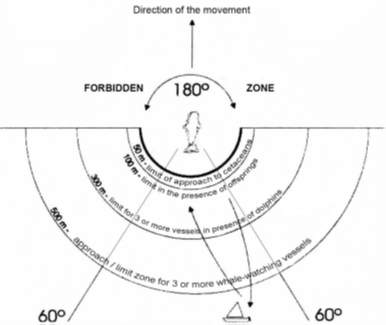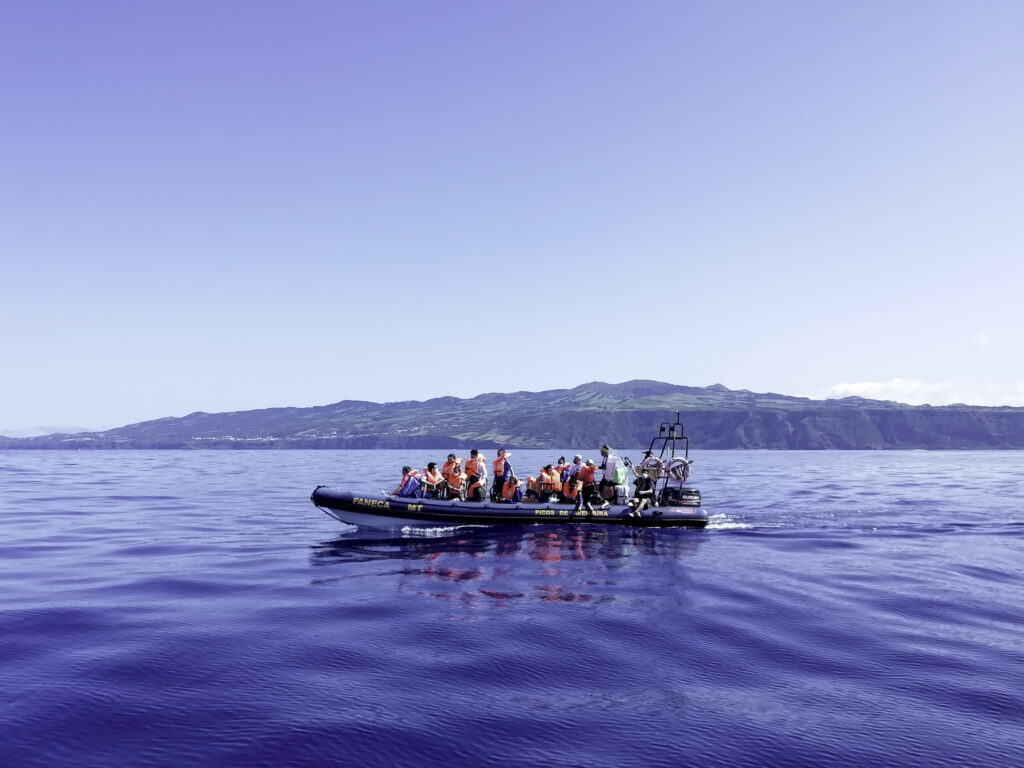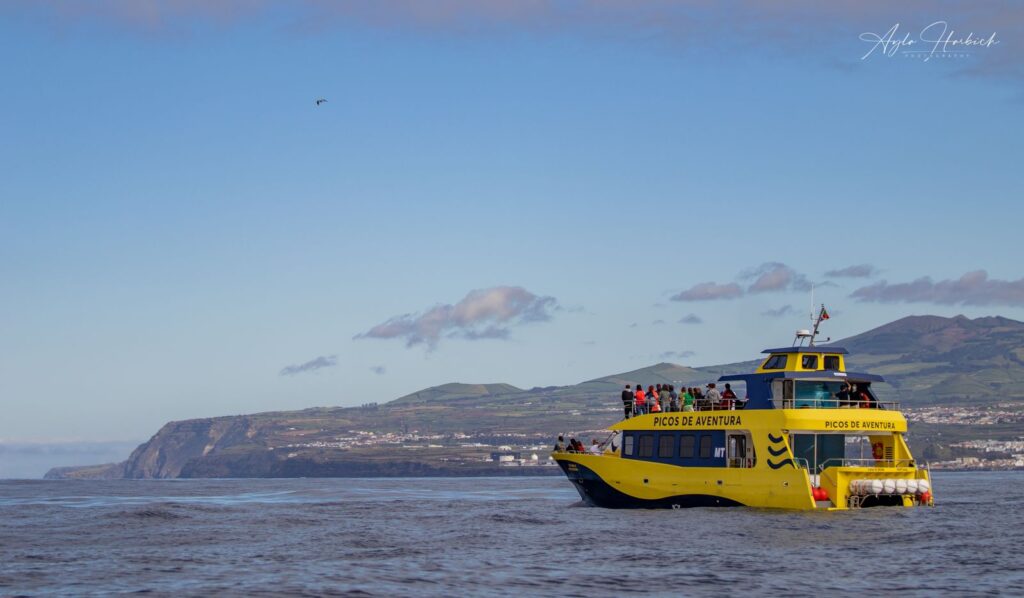The activity whale-watching is an activity that is growing and expanding globally, becoming important not only for the tourism market but also for the economy of the region and the scientific community.
Whale-watching can be defined as the activity of observing wild animals, whales, and dolphins, in their own habitats from a non-land-based platform. This activity, if always conducted in agreement with the legal regulations and principles of environment protection, can manage to become significant to research and environmental education.
Finding the animals
To find the cetaceans, the method used in whaling is now used in whale-watching in the Azores, which are land-based lookouts (in Portuguese: vigias), that scan the sea, using binoculars, providing information about location, number of individuals and the species to the watching vessel, via VHF radio. Due to these lookouts, there is a low percentage of trips with zero sightings, fluctuating between 1% and 5% of trips with no sightings.
Legal regulations
As this activity developed, a concern about the cetacean’s welfare was raised, leading the Azorean Regional Government to implement management policies, such as theDecreto Legislativo Regional nº10 / 2003 / Aand a governmental order, the “Portaria 5/2004”. This decree states that the approximation to the animal should be made from behind, leaving a 180º field of vision to the animal, and it should not overcome 50 meters of distance between the animal and the watching vessel.
In case there are new-borns present, the distance should not be less than 100 meters (Fig. 1). In addition, each boat, observing the cetaceans, can stay for a maximum period of 30 minutes to observe the animal/group of animals.
In all the whale-watching trips, Picos de Aventura compromises to respect and implement all the legal regulations applied in the Azores, always with a professional team of skippers, biologists, and lookouts.

What should you bring?
For this activity, all costumers should wear comfortable clothes, suitable for the season. Even though we provide waterproof jackets (and trousers on winter) you should also bring enough clothes because normally in the sea is colder than on land.
Depending on where our lookouts send us to see the animals, some trips can be longer than others, so you should come prepared with some water, snacks, or fruit. Also, before any trip don’t forget to have a lighter meal, that will keep you nourished and will probably help you with not getting seasick.
On sunny days, remember also to bring and put on sunscreen!
Catamaran or speedboat?
For the more adventurous people, the speedboat is the ideal boat. This type of boat is small and get’s you closer to the water, and so you will see some animals a little bit closer. Also, it’s on the name “speed”, these are the fastest boats therefore you will have the time of your life! In this type of boat, the lifejacket is mandatory during the trip. The waterproof jackets (and trousers on winter) are provided for the activity on these boats, although they are not mandatory but advisable.

Our catamaran is perfect if you are looking for a more tranquil trip. In this boat you can walk around, without a mandatory lifejacket, and sit wherever you’d like. But remember, sometimes the sea is wavier than other times, so always hold on to something when its moving.
The catamaran is more suitable for older people and smaller children. This boat is equipped with two bathrooms and a big hall with benches so you can use if you’re feeling colder on the outside. Some species of dolphins are known for liking to bow-ride the waves of boats, therefore if you stay in the front of this boat, you will get a good look of this animals.

Briefing and responsibility contract
Before going to the sea, a security and responsibility briefing is presented, and a contract is given to all clients, and all should sign this contract (for the underage children the contract is sign by the parents or the responsible person who is taking care of them). We don’t advise pregnant ladies, people with back or heart problems and anxiety problems to go on the trips. In general, the clients should be in good health conditions. The duration of the whale watching activity is between two hours and half and three hours, with the briefing about the activity included.
Hope to see you in a whale-watching trip soon! Book your experience with us here.
